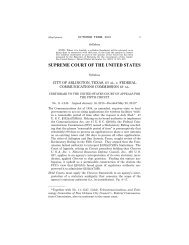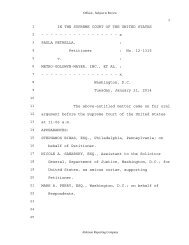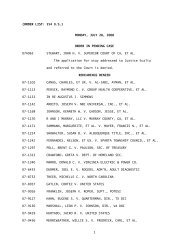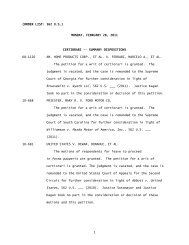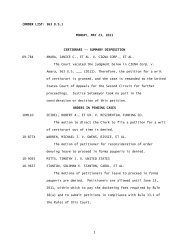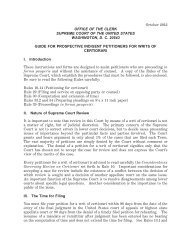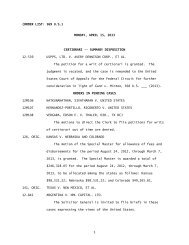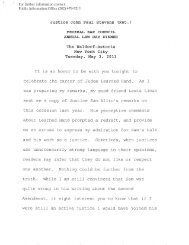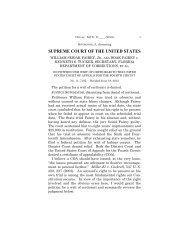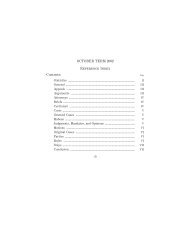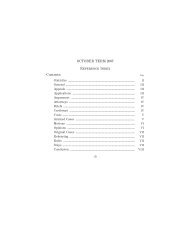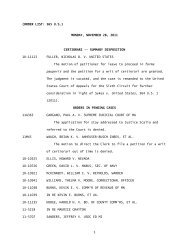12-398 Association for Molecular Pathology v. Myriad Genetics, Inc ...
12-398 Association for Molecular Pathology v. Myriad Genetics, Inc ...
12-398 Association for Molecular Pathology v. Myriad Genetics, Inc ...
You also want an ePaper? Increase the reach of your titles
YUMPU automatically turns print PDFs into web optimized ePapers that Google loves.
16 ASSOCIATION FOR MOLECULAR PATHOLOGY v.<br />
MYRIAD GENETICS, INC.<br />
Opinion of the Court<br />
Act may be used to issue patents on claims directed to or<br />
encompassing a human organism”).<br />
Further undercutting the PTO’s practice, the United<br />
States argued in the Federal Circuit and in this Court that<br />
isolated DNA was not patent eligible under §101, Brief <strong>for</strong><br />
United States as Amicus Curiae 20–33, and that the<br />
PTO’s practice was not “a sufficient reason to hold that<br />
isolated DNA is patent-eligible.” Id., at 26. See also id.,<br />
at 28–29. These concessions weigh against deferring to<br />
the PTO’s determination. 7<br />
C<br />
cDNA does not present the same obstacles to patentability<br />
as naturally occurring, isolated DNA segments. As<br />
already explained, creation of a cDNA sequence from<br />
mRNA results in an exons-only molecule that is not naturally<br />
occurring. 8 Petitioners concede that cDNA differs<br />
from natural DNA in that “the non-coding regions have<br />
——————<br />
7 <strong>Myriad</strong> also argues that we should uphold its patents so as not to<br />
disturb the reliance interests of patent holders like itself. Brief <strong>for</strong><br />
Respondents 38–39. Concerns about reliance interests arising from<br />
PTO determinations, insofar as they are relevant, are better directed to<br />
Congress. See Mayo Collaborative Services v. Prometheus Laboratories,<br />
<strong>Inc</strong>., 566 U. S. ___, ___ (20<strong>12</strong>) (slip op., at 22–24).<br />
8 Some viruses rely on an enzyme called reverse transcriptase to reproduce<br />
by copying RNA into cDNA. In rare instances, a side effect of<br />
a viral infection of a cell can be the random incorporation of fragments<br />
of the resulting cDNA, known as a pseudogene, into the genome. Such<br />
pseudogenes serve no purpose; they are not expressed in protein<br />
creation because they lack genetic sequences to direct protein expression.<br />
See J. Watson et al., <strong>Molecular</strong> Biology of the Gene 142, 144, fig.<br />
7–5 (6th ed. 2008). Perhaps not surprisingly, given pseudogenes’<br />
apparently random origins, petitioners “have failed to demonstrate that<br />
the pseudogene consists of the same sequence as the BRCA1 cDNA.”<br />
<strong>Association</strong> <strong>for</strong> <strong>Molecular</strong> <strong>Pathology</strong> v. United States Patent and<br />
Trademark Office, 689 F. 3d 1303, 1356, n. 5 (CA Fed. 20<strong>12</strong>). The<br />
possibility that an unusual and rare phenomenon might randomly<br />
create a molecule similar to one created synthetically through human<br />
ingenuity does not render a composition of matter nonpatentable.



